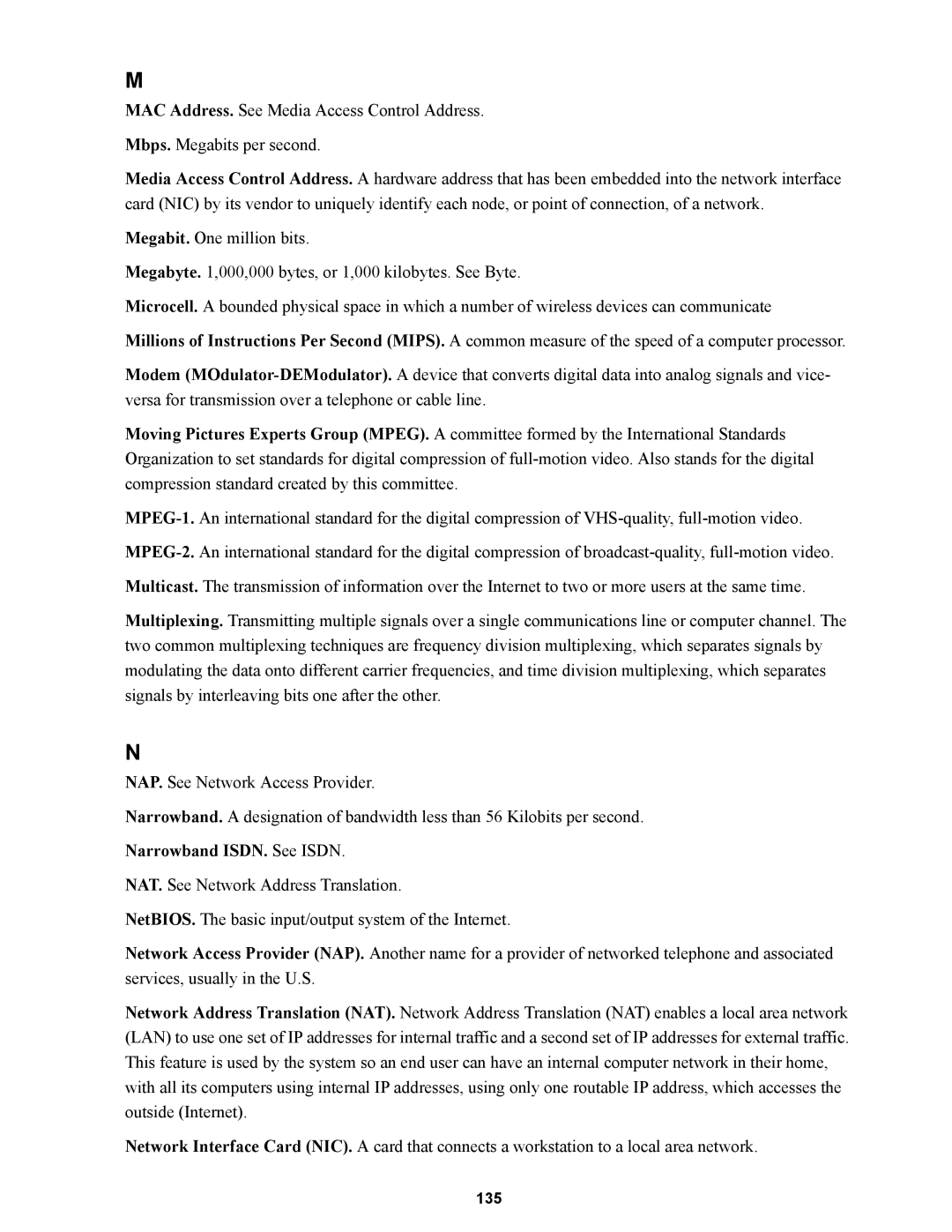M
MAC Address. See Media Access Control Address.
Mbps. Megabits per second.
Media Access Control Address. A hardware address that has been embedded into the network interface card (NIC) by its vendor to uniquely identify each node, or point of connection, of a network.
Megabit. One million bits.
Megabyte. 1,000,000 bytes, or 1,000 kilobytes. See Byte.
Microcell. A bounded physical space in which a number of wireless devices can communicate
Millions of Instructions Per Second (MIPS). A common measure of the speed of a computer processor.
Modem
Moving Pictures Experts Group (MPEG). A committee formed by the International Standards Organization to set standards for digital compression of
Multicast. The transmission of information over the Internet to two or more users at the same time.
Multiplexing. Transmitting multiple signals over a single communications line or computer channel. The two common multiplexing techniques are frequency division multiplexing, which separates signals by modulating the data onto different carrier frequencies, and time division multiplexing, which separates signals by interleaving bits one after the other.
N
NAP. See Network Access Provider.
Narrowband. A designation of bandwidth less than 56 Kilobits per second.
Narrowband ISDN. See ISDN.
NAT. See Network Address Translation.
NetBIOS. The basic input/output system of the Internet.
Network Access Provider (NAP). Another name for a provider of networked telephone and associated services, usually in the U.S.
Network Address Translation (NAT). Network Address Translation (NAT) enables a local area network (LAN) to use one set of IP addresses for internal traffic and a second set of IP addresses for external traffic. This feature is used by the system so an end user can have an internal computer network in their home, with all its computers using internal IP addresses, using only one routable IP address, which accesses the outside (Internet).
Network Interface Card (NIC). A card that connects a workstation to a local area network.
135
